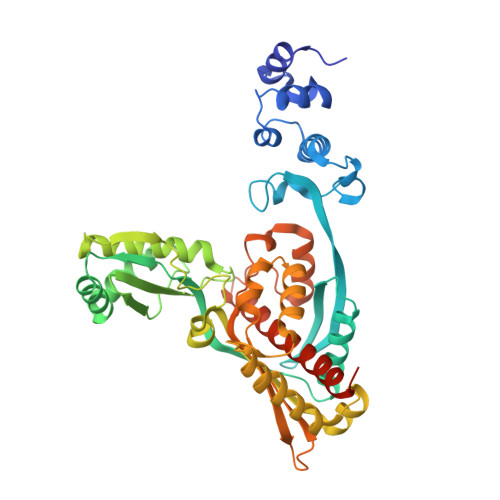Thermodynamic and structure guided design of statin based inhibitors of 3-hydroxy-3-methylglutaryl coenzyme a reductase.
Sarver, R.W., Bills, E., Bolton, G., Bratton, L.D., Caspers, N.L., Dunbar, J.B., Harris, M.S., Hutchings, R.H., Kennedy, R.M., Larsen, S.D., Pavlovsky, A., Pfefferkorn, J.A., Bainbridge, G.(2008) J Med Chem 51: 3804-3813
- PubMed: 18540668
- DOI: https://doi.org/10.1021/jm7015057
- Primary Citation of Related Structures:
3CCT, 3CCW, 3CCZ, 3CD0, 3CD5, 3CD7, 3CDA, 3CDB - PubMed Abstract:
Clinical studies have demonstrated that statins, 3-hydroxy-3-methylglutaryl coenzyme A reductase (HMGR) inhibitors, are effective at lowering mortality levels associated with cardiovascular disease; however, 2-7% of patients may experience statin-induced myalgia that limits compliance with a treatment regimen. High resolution crystal structures, thermodynamic binding parameters, and biochemical data were used to design statin inhibitors with improved HMGR affinity and therapeutic index relative to statin-induced myalgia. These studies facilitated the identification of imidazole 1 as a potent (IC 50 = 7.9 nM) inhibitor with excellent hepatoselectivity (>1000-fold) and good in vivo efficacy. The binding of 1 to HMGR was found to be enthalpically driven with a Delta H of -17.7 kcal/M. Additionally, a second novel series of bicyclic pyrrole-based inhibitors was identified that induced order in a protein flap of HMGR. Similar ordering was detected in a substrate complex, but has not been reported in previous statin inhibitor complexes with HMGR.
Organizational Affiliation:
Pfizer Global Research & Development, Ann Arbor, Michigan 48105, USA. Ronald.w.sarver@pfizer.com















